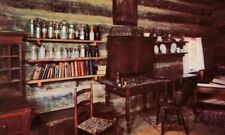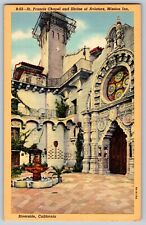1831 FRANCIS SCOTT KEY 4TH OF JULY Revolutionary War Antique Tea Party Patriotic

When you click on links to various merchants on this site and make a purchase, this can result in this site earning a commission. Affiliate programs and affiliations include, but are not limited to, the eBay Partner Network.
1831 FRANCIS SCOTT KEY 4TH OF JULY Revolutionary War Antique Tea Party Patriotic:
$5500.00
$$$ EXTREMELY VALUABLE $$$
LESS THAN TEN (10) KNOWN TO EXIST!!! ONLY ONE OTHER LISTED FOR SALE WORLDWIDE AT $7,500!!
\"ORATION DELIVERED BY FRANCIS S. KEY, ESQ., IN THE ROTUNDO OF THE CAPITOL OF THE U. STATES, ON THE 4TH OF JULY, 1831.\"
BY FRANCIS SCOTT KEY, AUTHOR OF THE STAR SPANGLED BANNER!
Original whipstitching, 16pp, measures 9\" tall, with Untrimmed page edges straight from the printer in 1831!
FRANCIS SCOTT KEY: American lawyer and author of our national anthem \"The Star Spangled Banner\" who gave his first Fourth of July speech in Washington City in the rotunda of the Capitol. Francis Scott Key addresses supporters of President Andrew Jackson and attempts to moderate opposing sentiments in a politically divided city. Similar to the inspiration reflected in the text to the national anthem, Key\'s use of words is poetic and speaks to the national reverence of the day. \"The spectacle of a happy people, rejoicing in thankfulness before God and the world for the blessing of civil liberty, is no vain pageant.\"
This Profoundly Rare Original American Foundational Cornerstone isin Great Original 1831 Condition! Autograph ink signature of Simeon Ford at upper rh corner of cover. Embossed stamp of previous owner on t.p and on p. 4 (Rochester Historical Society); corner tornwith small area of loss to lower rh corner edge of first two leaves. ONLY ONE OTHER LISTED FOR SALE WORLDWIDE AT $7,500!!!
Francis Scott Key (August 1, 1779–January 11, 1843) was an American lawyer, author, and amateur poet, from Georgetown, who wrote the words to the United States\' national anthem, \"The Star-Spangled Banner.\" Life
Francis Scott Key was born to Ann Phoebe Penn Dagworthy (Charlton) and Captain John Ross Key at the family plantation Terra Rubra in what was Frederick County and is now Carroll County, Maryland. His father John Ross Key was a lawyer, a judge and an officer in the Continental Army.
He studied law at St. John\'s College, Annapolis, Maryland and also learned under his uncle Philip Barton Key.
\"The Star-Spangled Banner\"
During the War of 1812, Key, accompanied by the American Prisoner Exchange Agent Colonel John Stuart Skinner, dined aboard the British ship HMS Tonnant, as the guests of three British officers: Vice Admiral Alexander Cochrane, Rear Admiral Sir George Cockburn, and Major General Robert Ross. Skinner and Key were there to negotiate the release of a prisoner, Dr. William Beanes. Beanes was a resident of Upper Marlboro, Maryland and had been captured by the British after he placed rowdy stragglers under citizen\'s arrest with a group of men. Skinner, Key, and Beanes were allowed to return to their own sloop, but were not allowed to return to Baltimore because they had become familiar with the strength and position of the British units and with the British intent to attack Baltimore. As a result of this, Key was unable to do anything but watch the bombarding of the American forces at Fort McHenry during the Battle of Baltimore on the night of September 13–September 14, 1814.
When the smoke cleared, Key was able to see an American Flag still waving. On the way back to Baltimore, he was inspired to write a poem describing his experience, \"The Defence of Fort McHenry\", which he published in the Patriot on September 20, 1814. He intended to fit the rhythms of composer John Stafford Smith\'s \"To Anacreon in Heaven\". It has become better known as \"The Star Spangled Banner\". Under this name, the song was adopted as the American national anthem, first by an Executive Order from President Woodrow Wilson in 1916 (which had little effect beyond requiring military bands to play it) and then by a Congressional resolution in 1931, signed by President Herbert Hoover.
Later life
In 1832, Key served as the attorney for Sam Houston during his trial in the U.S. House of Representatives for assaulting another Congressman.He published a prose work called The Power of Literature, and Its Connection with Religion in 1834.
In 1835, Key prosecuted Richard Lawrence for his unsuccessful attempt to assassinate President of the United States Andrew Jackson.
In 1843, Key died at the home of his daughter Elizabeth Howard in Baltimore from pleurisy and was initially interred in Old Saint Paul\'s Cemetery in the vault of John Eager Howard. In 1866, his body was moved to his family plot in Frederick at Mount Olivet Cemetery. Though Key had written poetry from time to time, often with heavily religious themes, these works were not collected and published until 14 years after his death.
The Key Monument Association erected a memorial in 1898 and the remains of both Francis Scott Key and his wife were placed in a crypt in the base of the monument.
Other related items
In 1861, Key\'s grandson was imprisoned in Fort McHenry with the Mayor of Baltimore, George William Brown, and other locals deemed to be pro-South.
Key was a distant cousin and the namesake of F. Scott Fitzgerald whose full name was Francis Scott Key Fitzgerald. His direct descendants include geneticist Thomas Hunt Morgan, guitarist Dana Key, and the American fashion designer and socialite Pauline de Rothschild.
His sister, Anne Phoebe Charlton Key, married Roger B. Taney, future Chief Justice of the United States and author of the Court\'s Dred Scott decision.
Key\'s son, Philip Barton Key was shot and killed by General Daniel Sickles in 1859 after General Sickles discovered that his wife was having an affair with Philip Barton Key.
Robert Altman credited Key with the \"title song\" of Brewster McCloud, though it contained only John Stafford Smith\'s instrumentals.
-HISTORY OF THE 4TH OF JULY-
By the middle of the 1700s, the 13 colonies that made up part of England\'s empire in the New World were finding it difficult to be ruled by a king 3,000 miles across the Atlantic Ocean. They were tired of the taxes imposed upon them. But independence was a gradual and painful process. The colonists could not forget that they were British citizens and that they owed allegiance to King George III.
A \"tea party\" and a \"Massacre\" were two events that hurried destiny. Along with general unrest these events united the colonists. In 1767 a tea company in India, owned by England, was losing money. To save the company, England levied a tax on tea sold in the colonies in 1773. Partly as a joke, Samuel Adams and other Bostonians dressed up as Indians and dumped a cargo of the India Company Tea into the Massachusetts Bay. King George III did not think it was funny, nor did he lift the tax on tea. In the Boston harbor, British soldiers were jeered and stoned by colonists who thought the soldiers had been sent to watch them. The soldiers fired into the crowd and killed a few citizens. The colonists exaggerated the number killed and called it a massacre.
Virginia took the first step toward independence by voting to set up a committee to represent the colonies. This First Continental Congress met in September of 1774. They drew up a list of grievances against the crown which became the first draft of a document that would formally separate the colonies from England. George Washington took command of the Continental Army and began fighting the British in Massachusetts. For the next eight years, colonists fought fervently in the Revolutionary War.
In the meantime, a war of words was being waged in Philadelphia, Pennsylvania. On July 2, 1776, the Second Continental Congress presented & debated a second draft of the list of grievances, and John Hancock, the president of the Second Continental Congress, was the first to sign. The document, called the Declaration of Independence, was treasonous against the crown and the fifty-six men who signed it were in danger of being executed.
Independence Day is celebrated on July 4 because that is the day when the Continental Congress adopted the final draft of the Declaration of Independence.
From July 8, 1776, until the next month, the document was read publicly and people celebrated whenever they heard it. The next year, in Philadelphia, bells rang and ships fired guns, candles and firecrackers were lighted. But the War of Independence dragged on until 1783, and in that year, Independence Day was made an official holiday.
John Adams, a lawyer, the first Vice President and the Second President of the United States, was one of the members of the Second Continental Congress who signed the Declaration of Independence. He wrote to his wife, \"I believe that it will be celebrated by succeeding generations as the great anniversary festival... it ought to be celebrated by pomp and parade, with shows, games, sports, guns, bells, bonfires and illuminations from one end of this continent to the other...\"
John Adams may have predicted the later Independence Day celebrations or perhaps he started traditions with his words. Every July fourth, Americans have a holiday from work. Communities have day-long picnics with favorite foods like hot dogs, hamburgers, potato salad, baked beans and all the fixings. The afternoon activities would not be complete without lively music, a friendly baseball game, three-legged races and a pie-eating or watermelon-eating contests. Some cities have parades with people dressed as the original founding fathers who march in parades to the music of high school bands. At dusk, people in towns and cities gather to watch the fireworks display. Wherever Americans are around the globe, they will get together for a traditional 4th of July celebration!
AN HISTORIC AMERICAN NATIONAL TREASURE!
TERMS: PAYPAL PAYMENT IS REQUESTED WITHIN 3 DAYS, THANKS!FREE SHIPPING!
SEE MY OTHER ITEMS OR YOULL BE SORRY!
CLICK BELOW, SOME ARE ENDING
.
1831 FRANCIS SCOTT KEY 4TH OF JULY Revolutionary War Antique Tea Party Patriotic:
$5500.00

Related Items:
CORNWALL. Tehiddy House (Seat of Francis Basset, Baron de Dunstanville) 1831
$6.22
1831 Dr Francis Regnier's Office Residence Lincoln's New Salem IL Postcard
$7.00
Riverside, CA - St. Francis Chapel & Shrine Aviators Inn - Vintage Postcard
$4.49







